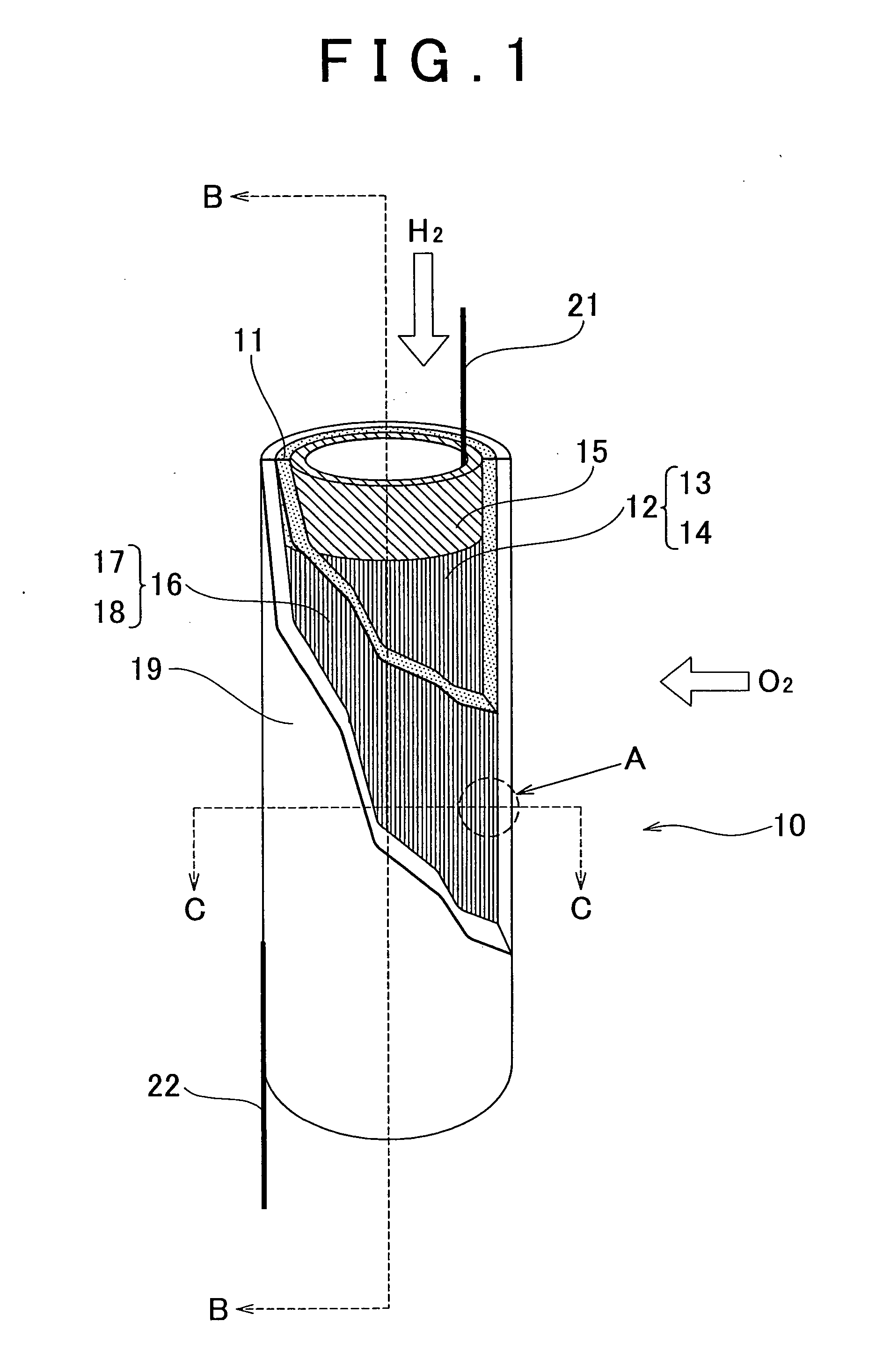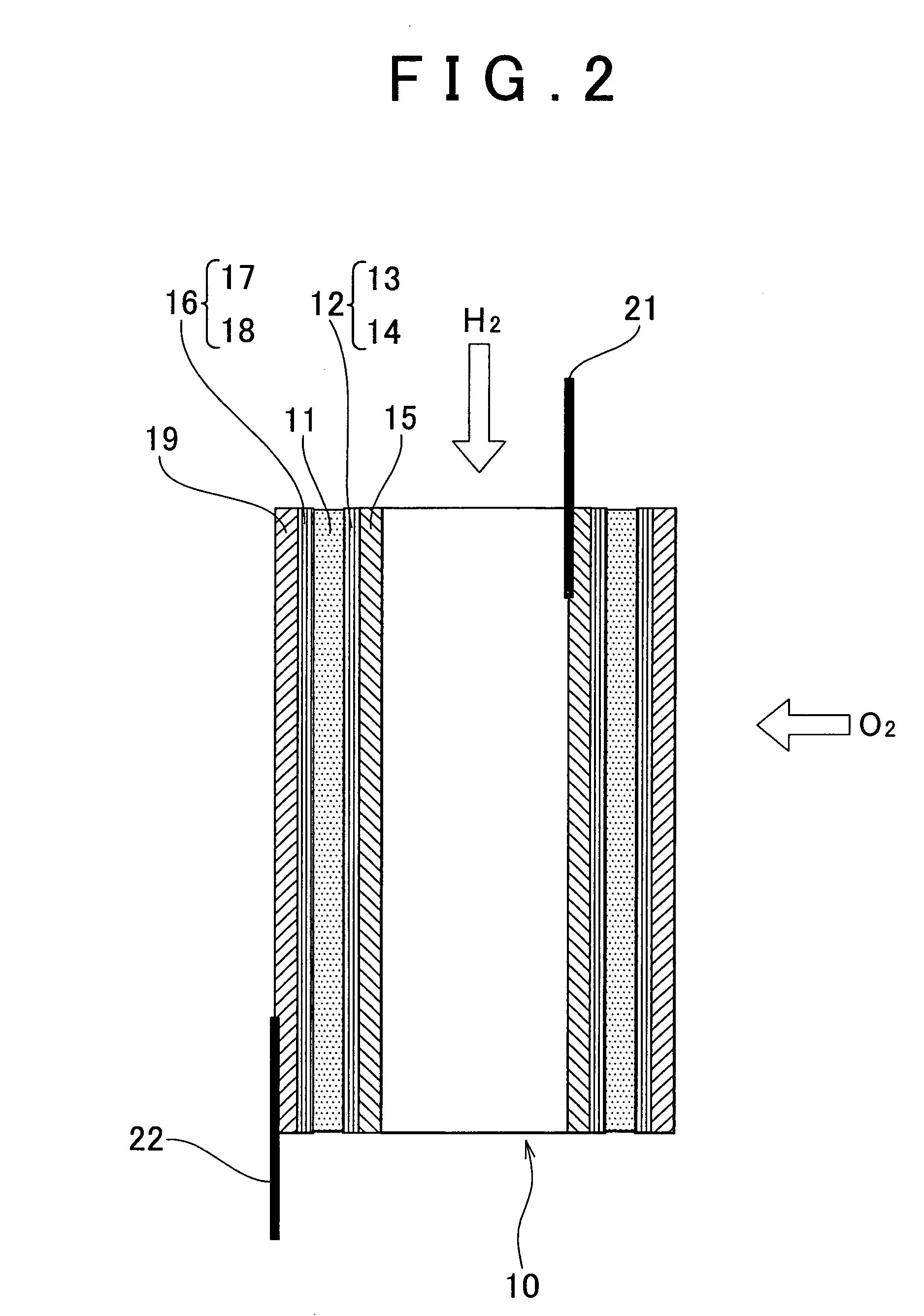Cell module for fuel cell, method for forming cell module, and fuel cell
a fuel cell and cell module technology, applied in the field of fuel cell cell modules, can solve the problems of increasing limit, inability to form cells that are drastically thinner than the commonly used cells, and difficulty in meeting the demand for more compact fuel cells, etc., to achieve the effect of reducing internal resistance of the cell module, increasing electric power generation efficiency, and high electric power generation efficiency
- Summary
- Abstract
- Description
- Claims
- Application Information
AI Technical Summary
Benefits of technology
Problems solved by technology
Method used
Image
Examples
first embodiment
[0040]The hollow-core electrolyte membrane (the fluorine ion-exchange resin membrane 11, in the first embodiment) is a hollow-core member that is open at both ends. Accordingly, separators are not required, and a large electrode area, which is used for electric power generation, is obtained.
[0041]Although not limited to certain values, the outer diameter of the hollow-core electrolyte membrane 11 is preferably 0.01 mm to 10 mm, more preferably 0.1 mm to 1 mm, and optimally 0.1 mm to 0.5 mm. Under the present circumstances, it is technically difficult to form the hollow-core electrolyte membrane 11 having an outer diameter of less than 0.01 mm. However, if the outer diameter of the hollow-core electrolyte membrane 11 exceeds 10 mm, the surface area with respect to the occupied volume is not sufficient. Accordingly, the effects of increasing the power output per unit volume of the cell module may not be sufficiently produced.
[0042]Preferably, the fluorine ion-exchange resin membrane 1...
second embodiment
[0118]Next, the method for forming the cell module 70 according to the invention will be described below.
[0119]The first carbon fiber layer 72 is formed on the first SUS pipe 15, which is the hollow-core conductor, to form the first intermediary body, for example, in the first CNT fixation collecting member coating step. In the first CNT fixation collecting member coating step, first, the short carbon fibers on which the carbon nanotubes are formed are dispersed in the solution, and the composition for forming of the CNT fixing carbon fiber layer is formed by adding an additive selected from various additives to the solution when required, and the outer face of the first SUS pipe 15 prepared in advance is coated with the CNT fixing carbon fiber layer forming composition. Although the liquid used as the solution is not limited to a certain liquid, for example, acetone is preferably used. Examples of preferable additives include a conductive filler that is the component used in a cond...
PUM
| Property | Measurement | Unit |
|---|---|---|
| length | aaaaa | aaaaa |
| thickness | aaaaa | aaaaa |
| thickness | aaaaa | aaaaa |
Abstract
Description
Claims
Application Information
 Login to View More
Login to View More - R&D
- Intellectual Property
- Life Sciences
- Materials
- Tech Scout
- Unparalleled Data Quality
- Higher Quality Content
- 60% Fewer Hallucinations
Browse by: Latest US Patents, China's latest patents, Technical Efficacy Thesaurus, Application Domain, Technology Topic, Popular Technical Reports.
© 2025 PatSnap. All rights reserved.Legal|Privacy policy|Modern Slavery Act Transparency Statement|Sitemap|About US| Contact US: help@patsnap.com



